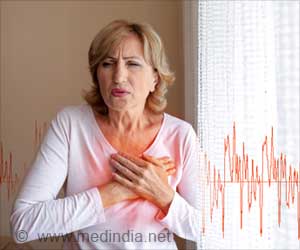
Vaginal thrush is a yeast infection that is generally harmless and treated with medication. It is a common infection, with 3 in every 4 women of reproductive age likely to be affected (1✔ ✔Trusted Source
The increasing rate of non-Candida albicans yeasts and fluconazole resistance in yeast isolates from women with recurrent vulvovaginal candidiasis in Leeds, United Kingdom
).
A recent study published in Sexually Transmitted Infections suggests that a change in medical policy can help to control the treatment-resistant vaginal thrush, along with other fungal infections caused by fungal Candida species.
Although the reason behind the increase in infections is not clear, it is important to find other solutions to reduce the workload in labs. Family doctors are now encouraged to diagnose and treat vaginal thrush based on the patient’s symptoms instead of waiting for lab test results.
Recurrent Vaginal Thrush in Women
In around 1 in 10 women, these infections are recurrent and at least have 4 episodes within 12 months. Resistance or lack of sensitivity to the mainstay of antifungal treatment (azoles) in Candida specimens from patients with a vaginal infection has been reported in other countries. This has also been noted in the UK, but only in specialist clinics, explain the researchers.
To obtain a more evidence-based picture of resistance levels and analyze wider trends, the researchers reviewed the culture results of 5461 vaginal swabs previously taken from women with suspected complicated or recurrent yeast infections in Leeds, northern England, between April 2018 and March 2021. Around a third (1828; 33.5%) grew yeasts, most of which (85%) every year were Candida albicans, the fungus responsible for most cases of vaginal thrush.
Changing Patterns in Vaginal Infection
But this proportion declined yearly amid an increase in other Candida species, of which the most common one isolated was Nakaseomyces glabrata, a species known to be less susceptible to azoles: this increased from just under 3% in 2018–19 to just under 7% in 2020–21. In all, the prevalence of these ‘other’ species increased from 6% in 2018–19 to 12.5%+ in 2020–21.
The cultures were tested for their susceptibility to treatment with antifungals, and this showed that the prevalence of isolates resistant, or less susceptible, to fluconazole rose from 3.5% in 2018–19 to almost 8% in 2019–20, and to just over 9.5% in 2020–21. And the overall prevalence of fluconazole resistance increased from just under 1% in 2018–19 to 1.5% in 2019–20, and 3% in 2020–21—a more than fourfold increase over the 3 years.
Most of the isolates unresponsive to fluconazole were either sensitive according to dose or resistant to itraconazole (77% and 23%, respectively) and were also moderately or fully resistant to voriconazole (36.5% and 60%, respectively).
Most of the resistant isolates were C.albicans, and most of these cases were dealt with in primary care, although the proportion of resistant cases was higher in the swab samples from specialist sexual health clinics in 2019–20 and 2020–21.
In 2020–21, none of the yeasts from patients sampled at specialist sexual health clinics responded to fluconazole. No cases of overall resistance or reduced susceptibility were seen in hospital patients in 2018–19 and 2019–20, but some cases were seen in 2020–21.
Challenges in Treating Resistant Candida Infections
The study findings confirm a significant increase in the prevalence of non-Candida albicans species and fluconazole-resistant C.albicans between 2018 and 2021, according to the researchers. This increase in non-albicans species is of clinical concern as some have intrinsic reduced susceptibility to fluconazole.
Successful treatment of fluconazole-resistant C.albicans and non-Candida albicans can be very challenging, and this frequently requires multiple courses of antifungal treatment. Many of these yeasts also had reduced sensitivity to itraconazole and voriconazole, limiting treatment options even further.
“Since 2013, UK primary care guidance has recommended a clinical diagnosis of acute vulvovaginal candidiasis be made based on the typical signs and symptoms with testing for vaginal pH if available, followed by empirical treatment with single dose oral fluconazole or clotrimazole pessary,” explain the researchers.
Need for Change in Vaginal Infection Treatment Policies
“However, there is considerable evidence that vulvovaginal candidiasis is overdiagnosed clinically by both clinicians and patients, so empirical treatment leads to inappropriate azole use,” they added.
The exact reasons for this increase in fluconazole resistance remain unclear, but it follows the introduction of restricted access to fungal cultures for the diagnosis of vulvovaginal candidiasis by those working in primary care.
“A clinical diagnosis, followed by empirical treatment, has been recommended instead. Consequently, we believe this policy of encouraging empirical vaginitis treatment based on non-specific symptoms and signs needs revisiting.”
Reference:
- Increasing rate of non-Candida albicans yeasts and fluconazole resistance in yeast isolates from women with recurrent vulvovaginal candidiasis in Leeds, United Kingdom – (10.1136/sextrans-2024-056186)
Source-Eurekalert



